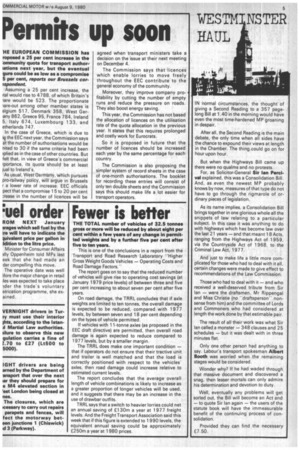Fewer is better
Page 7

If you've noticed an error in this article please click here to report it so we can fix it.
THE TOTAL number of vehicles of 32.5 tonnes gross or more will be reduced by about eight per cent within a few years of any change in permitted weights and by a further five per cent after five to ten years.
This is one of the conclusions in a report from the Transport and Road Research Laboratory "Higher Gross Weight Goods Vehicles — Operating Costs and Road Damage Factors."
The report goes on to say that the reduced number of vehicles will give rise to operating cost savings (at January 1979 price levels) of between three and five per cent increasing to about seven per cent after five years.
On road damage, the TRRL concludes that if axle weights are limited to ten tonnes, the overall damage is expected to be reduced, compared with 1977 levels, by between seven and 18 per cent depending on the types of vehicle permitted.
If vehicles with 11-tonne axles (as proposed in the EEC draft directive) are permitted, then overall road damage is again expected to reduce compared to 1977 levels, but by a smaller margin.
The TRRL does make one important condition — that if operators do not ensure that their tractive unit and trailer is well matched and that the load is correctly positioned with respect to the vehicles' axles, then road damage could increase relative to estimated current levels.
The report concludes that the average overall length of vehicle combinations is likely to increase as a greater proportion of longer vehicles will be used, and it suggests that there may be an increase in the use of drawbar outfits.
TRRL says that a switch to heavier lorries could net an annual saving of £130m a year at 1977 freight levels. And the Freight Transport Association said this week that if this figure is extended to 1990 levels, the equivalent annual saving could be approximately £250m a year at 1980 prices.












































































































